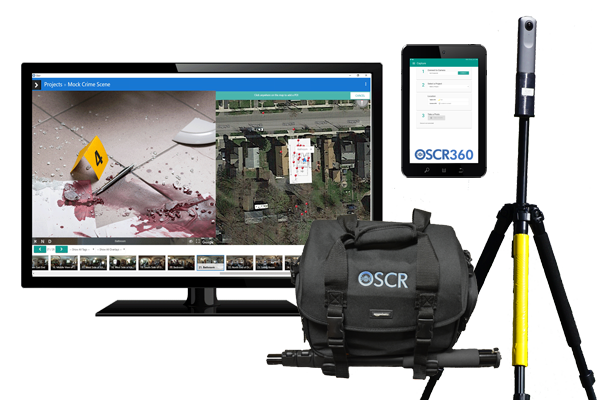In this blog series, OSCR Edu-Techie, Carmella sits down with her father, Lou Giancursio, a former Rochester City Firefighter with over 20 years of experience. Giancursio answers some key questions around pre-planning and emergency management, outlining what do arson investigators look for during a fire investigation.
Q: What do arson investigators look for during a fire investigation? How can OSCR help?
Giancursio says, “Arson investigation begins with the initial 911 call, where information gathering starts. Then the first firefighter on scene does a size-up, which includes obvious things like whether the house is vacant or has utilities supplied to it to rule out electric/natural gas fires; if the house is locked up and intact but there are signs of forced entry; if there are unique scents like gasoline. What the firefighter initially sees helps with the future investigation. Once the fire is brought under control, and if it is suspicious from the start, firefighters are instructed to be careful not to disturb potential evidence. After the fire, you look for what’s known as a V-pattern. The smallest point on the V has the deepest intensity of burn. It will help to locate the approximate point of origin of the fire. The search begins, looking for electrical wiring, an empty can of gasoline, broken bottles that indicate a Molotov cocktail, etc.”
OSCR360 is a tool for arson investigators that captures the fire scene in its entirety – from side to side and top to bottom. The 360-degree photos that are captured are useful throughout the investigation phase, as investigators can virtually revisit the scene looking for details they may have missed. The panoramic photos are also invaluable in the courtroom, as juries can virtually tour the scene and grasp the full picture, rather than traditional photos that capture one piece of evidence at a time.
Watch a [Video]: How OSCR360 Assists on an Arson Investigation
Q: Why is emergency pre-planning important and how can current measures be improved?
Emergency pre-planning is all about being as prepared as possible before trouble strikes. Retired Firefighter Giancursio says, “We try to personally get to know the buildings. During annual inspections of commercial buildings and high-occupancy buildings we make notes during the tour and try to memorize floor plans.”
OSCR360 takes pre-planning to the next level by providing a virtual tour of high risk buildings and public locations, so firefighters are mentally prepared to enter a scene as confidently as possible.

In a matter of minutes, OSCR can capture so many more locations than any city firefighter could personally tour on his/her shift. The ability to review locations virtually during training exercises or down time during one’s shift can help alleviate fears of entering an unfamiliar space.
Giancursio continues, “There is potential for more pre-planning in target buildings – anywhere with high life-safety issues, such as schools, places of public assembly, bars and nightclubs, as well as buildings that are frequented by homeless or transient people that we tend to receive a greater number of calls for. Every time a structure or particular address gets a certain amount of calls that is above average and cause for concern, that would be ideal for pre-planning. My thought is that spherical photography could take place during any routine inspection or at any call (fire, EMS, false alarm, etc) because you already have access to the building.”
Watch a [Video]: OSCR360 for Preplanning
Interested in more information on OSCR360? Or do you have more questions around what do arson investigators look for when responding to a fire scene? Visit our OSCR for fire page and see other resources below: